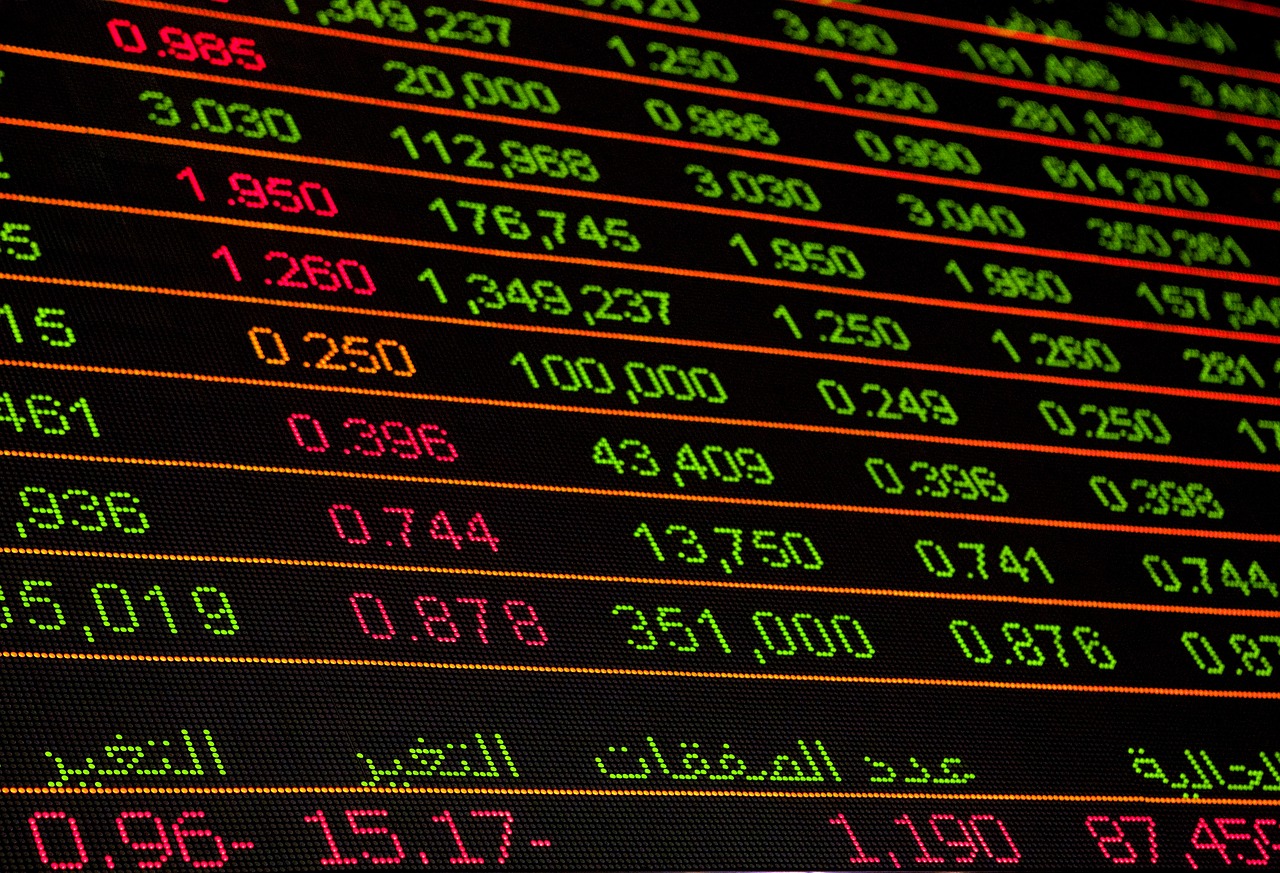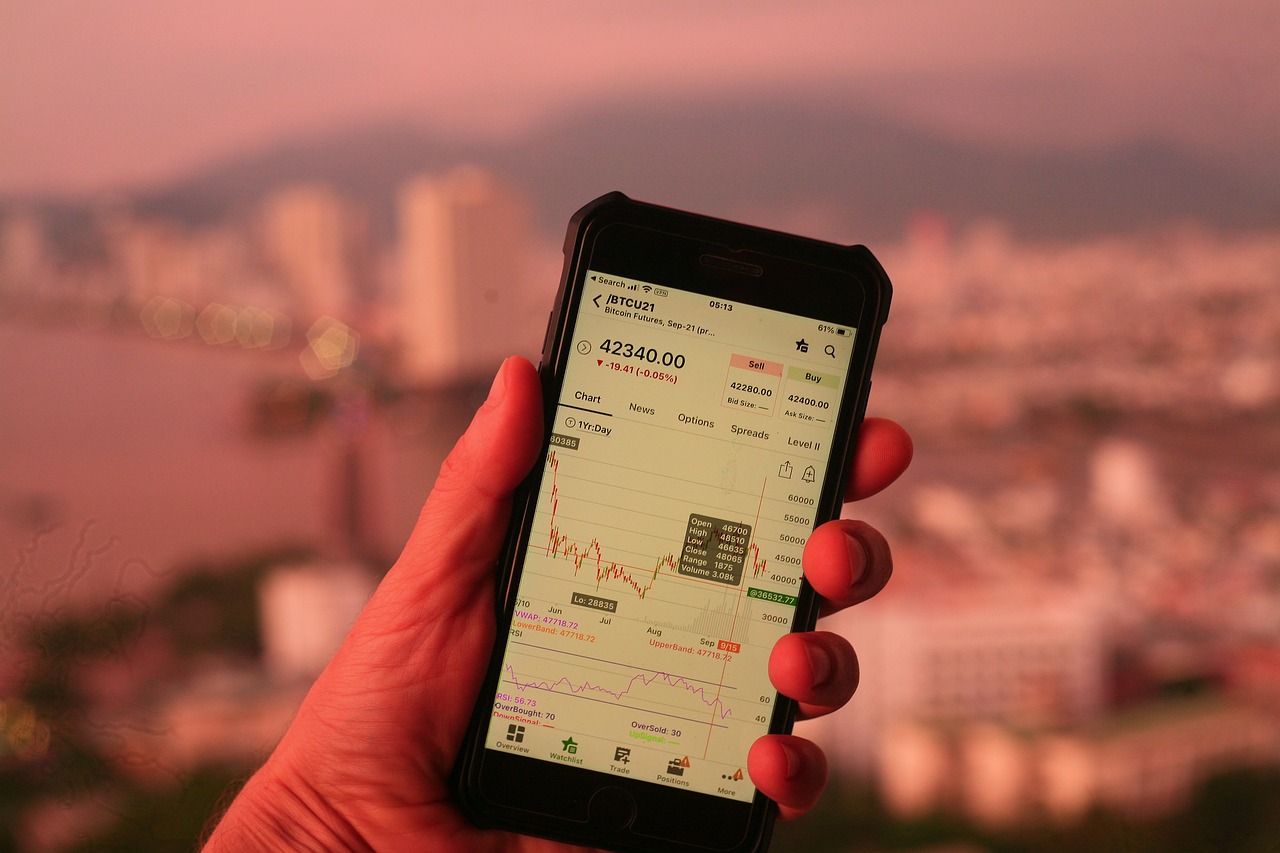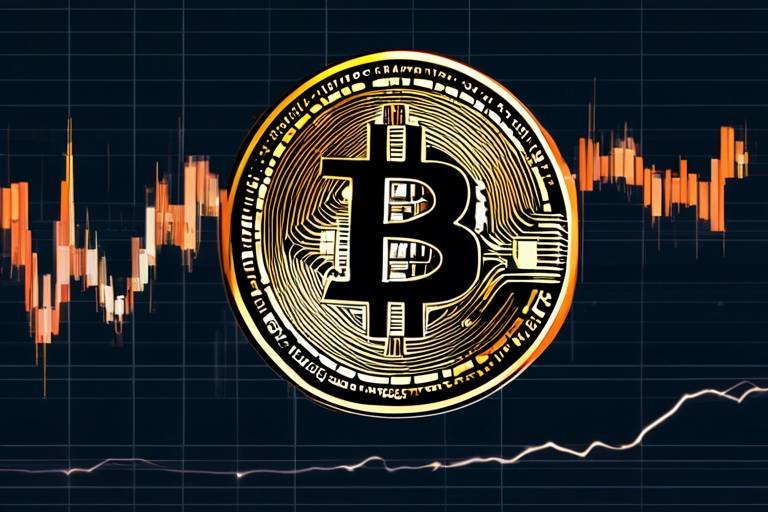Utilizing Ichimoku Clouds in Cryptocurrency Trading
In the fast-paced world of cryptocurrency trading, staying ahead of the curve is crucial. One of the most powerful tools at your disposal is the Ichimoku Cloud. This sophisticated indicator not only helps you identify market trends but also provides insights into potential entry and exit points, making it a favorite among seasoned traders. But what exactly are Ichimoku Clouds, and how can you leverage them to improve your trading strategy? Let's dive deep into this fascinating topic and uncover the secrets of the Ichimoku Cloud.
At its core, the Ichimoku Cloud is a comprehensive indicator that offers a wealth of information about market dynamics. It encompasses various elements that together provide a clearer picture of support and resistance levels, momentum, and overall trend direction. In the often volatile cryptocurrency market, where prices can swing dramatically in a matter of minutes, having a reliable tool like the Ichimoku Cloud can be a game-changer. Think of it as a weather forecast for your trading journey; just as you wouldn't venture out without checking the weather, you shouldn't trade without understanding the market conditions presented by the Ichimoku Cloud.
The Ichimoku Cloud consists of five main components, each serving a unique purpose in analyzing market conditions:
- Tenkan-sen (Conversion Line): This is calculated using the average of the highest high and lowest low over the last nine periods, providing insights into short-term price movements.
- Kijun-sen (Base Line): Representing the average of the highest high and lowest low over the last 26 periods, this line serves as a longer-term trend indicator.
- Senkou Span A: This is the average of the Tenkan-sen and Kijun-sen, shifted forward by 26 periods, forming one boundary of the cloud.
- Senkou Span B: Calculated using the average of the highest high and lowest low over the last 52 periods, this line also shifts forward by 26 periods, forming the other boundary of the cloud.
- Chikou Span: This is the closing price plotted 26 periods into the past, providing a unique perspective on market sentiment.
The Tenkan-sen is your go-to for identifying short-term price movements. By averaging the highest and lowest prices over the last nine periods, it acts as a quick reference point for potential reversal areas. Imagine it as the speedometer of your trading vehicle; it tells you how fast the market is moving and whether it's time to accelerate or hit the brakes.
On the other hand, the Kijun-sen provides a broader view of the market's health. By averaging the highest and lowest prices over the last 26 periods, it serves as a critical support or resistance level. Think of it as the foundation of a house; without a solid base, everything else risks collapsing. Traders often look for price interactions with the Kijun-sen to gauge market strength.
The cloud itself, formed by the Senkou Span A and Senkou Span B, is a visual representation of the market's support and resistance levels. When the price is above the cloud, it indicates a bullish trend; conversely, when it's below, a bearish trend is in play. The area within the cloud can often serve as a zone of indecision, where traders are uncertain about the future direction of the market. Understanding these dynamics can help you navigate through the choppy waters of cryptocurrency trading.
One of the most exciting aspects of using Ichimoku Clouds is the trading signals they generate. For instance, when the price crosses above the cloud, it typically indicates a bullish signal, suggesting it's time to consider entering a long position. On the flip side, when the price dips below the cloud, it signals a bearish trend, often prompting traders to exit positions or consider shorting. By keeping an eye on these signals, you can make more informed decisions and potentially increase your profitability.
Understanding bullish and bearish signals is essential for successful trading. Bullish signals occur when the price crosses above the cloud, indicating strong upward momentum. Conversely, bearish signals arise when the price falls below the cloud, suggesting a potential downturn. Recognizing these patterns can empower you to act swiftly and strategically in the ever-changing cryptocurrency landscape.
While the Ichimoku Cloud is a powerful tool on its own, combining it with other technical indicators like the Relative Strength Index (RSI) or Moving Average Convergence Divergence (MACD) can enhance your trading strategy. This multi-faceted approach allows you to confirm signals and gain a more comprehensive view of market trends, ultimately improving your trading accuracy.
Despite its effectiveness, many traders fall into common traps when using Ichimoku Clouds. For instance, some may ignore the overall trend, focusing solely on individual components, which can lead to misguided decisions. Others might misinterpret signals due to a lack of understanding of how the different elements interact. To avoid these pitfalls, it’s essential to have a solid grasp of the entire Ichimoku framework and to continuously educate yourself about market dynamics.
By understanding and effectively utilizing Ichimoku Clouds, you can significantly enhance your cryptocurrency trading strategies. This powerful tool not only aids in decision-making but also has the potential to improve your profitability in dynamic market conditions. So, whether you're a seasoned trader or just starting, take the time to master this indicator, and watch as it transforms your trading experience.
What is the Ichimoku Cloud indicator?
The Ichimoku Cloud is a comprehensive technical indicator that provides information about support, resistance, momentum, and trend direction in the market.
How do I use Ichimoku Clouds in trading?
You can use Ichimoku Clouds to identify bullish and bearish signals, determine support and resistance levels, and make informed trading decisions based on market trends.
Can I use Ichimoku Clouds with other indicators?
Absolutely! Combining Ichimoku Clouds with indicators like RSI or MACD can enhance your trading strategy and provide a more comprehensive view of market conditions.
What are common mistakes when trading with Ichimoku Clouds?
Common mistakes include ignoring the overall trend, relying solely on one component, and misinterpreting signals, which can lead to poor trading decisions.

Understanding Ichimoku Clouds
When it comes to navigating the turbulent waters of cryptocurrency trading, Ichimoku Clouds stand out as a powerful tool. But what exactly are they? In essence, Ichimoku Clouds are a comprehensive technical analysis indicator that offers traders a holistic view of market trends, momentum, and potential support and resistance levels. Think of it as a Swiss Army knife for traders—equipped to tackle various market scenarios with a single glance.
Unlike traditional indicators that often focus on just one aspect of market behavior, Ichimoku Clouds provide a multi-faceted perspective. This is crucial in the highly volatile world of cryptocurrencies, where prices can swing dramatically within short timeframes. By utilizing Ichimoku Clouds, traders can make more informed decisions, feeling like they have a compass guiding them through the chaos of the market.
The beauty of Ichimoku Clouds lies in their ability to combine several elements into one visual representation. They encompass not just current price action but also historical data, allowing traders to gauge both short-term and long-term trends. It’s like having a bird’s-eye view of the market while still being able to zoom in on specific details when necessary.
For those who might be new to the concept, think of Ichimoku Clouds as a weather forecast for trading. Just as a weather report helps you decide whether to carry an umbrella or wear sunglasses, Ichimoku Clouds help traders decide when to enter or exit a trade. They provide crucial insights into whether the market is sunny and bullish or stormy and bearish.
To truly grasp the power of Ichimoku Clouds, one must delve into their components. These include the Tenkan-sen, Kijun-sen, Senkou Span A, Senkou Span B, and Chikou Span. Each of these elements plays a unique role in the overall analysis, contributing to the formation of the cloud itself. By understanding the interplay between these components, traders can enhance their strategies and make more informed decisions.
In summary, Ichimoku Clouds are not just another technical indicator; they are a comprehensive system that offers a panoramic view of market conditions. By integrating multiple data points, they empower traders to anticipate price movements, identify trends, and ultimately, make better trading decisions. As we dive deeper into the components of Ichimoku Clouds in the following sections, you'll see just how this tool can transform your trading approach.
- What is the primary purpose of Ichimoku Clouds? Ichimoku Clouds are designed to provide a comprehensive view of market trends, support, resistance, and momentum, helping traders make informed decisions.
- How do Ichimoku Clouds differ from other indicators? Unlike many indicators that focus on single aspects of price action, Ichimoku Clouds combine multiple elements for a more holistic analysis.
- Can Ichimoku Clouds be used for short-term trading? Yes, Ichimoku Clouds can be effectively used for both short-term and long-term trading strategies.
- Is it necessary to combine Ichimoku Clouds with other indicators? While Ichimoku Clouds provide valuable insights, combining them with other indicators like RSI or MACD can enhance trading strategies.

Components of Ichimoku Clouds
The Ichimoku Cloud is not just a fancy name; it’s a powerful trading tool that consists of five key components, each playing a vital role in deciphering market trends and potential price movements. Think of it as a Swiss Army knife for traders—each part has its function, and when used together, they provide a comprehensive outlook on the market. Let’s dive into these components and see how they can benefit your cryptocurrency trading strategy.
The first component is the Tenkan-sen, also known as the Conversion Line. This line is calculated by taking the average of the highest high and the lowest low over the last nine periods. It’s like the speedometer in your car, showing you how fast the price is moving in the short term. When the Tenkan-sen is rising, it indicates upward momentum, while a falling Tenkan-sen suggests the opposite. Traders often look for potential reversal points around this line, making it a crucial indicator for short-term trading.
Next up is the Kijun-sen, or the Base Line. This line is calculated using the highest high and lowest low over the last 26 periods. If the Tenkan-sen is the speedometer, the Kijun-sen is like the odometer, giving you a broader view of the price trend over a longer timeframe. It serves as a significant support or resistance level, and when the price is above the Kijun-sen, it indicates a bullish trend. Conversely, if it’s below, traders may want to be cautious.
Now, let’s talk about the cloud itself, which is formed by two lines known as Senkou Span A and Senkou Span B. These two lines create the actual cloud that traders analyze. Senkou Span A is calculated by averaging the Tenkan-sen and Kijun-sen and then plotted 26 periods into the future. Senkou Span B is calculated using the highest high and lowest low over the last 52 periods, also plotted 26 periods ahead. The space between these two lines forms the cloud, which acts as a dynamic area of support and resistance. When the price is above the cloud, it’s typically considered bullish; when it’s below, bearish.
Lastly, we have the Chikou Span, or the Lagging Line. This line is essentially the closing price plotted 26 periods into the past. It’s like looking in the rearview mirror while driving—helping traders gauge how the current price compares to historical prices. If the Chikou Span is above the price, it indicates a bullish sentiment, while if it’s below, it suggests bearish sentiment. By analyzing the position of the Chikou Span, traders can confirm trends and enhance their decision-making process.
In summary, the five components of Ichimoku Clouds—Tenkan-sen, Kijun-sen, Senkou Span A, Senkou Span B, and Chikou Span—work together to provide a holistic view of market conditions. Understanding each part and how they interact can significantly improve your trading strategies. So, the next time you look at a chart, remember: it’s not just about the price; it’s about the story these components tell.
- What is the Ichimoku Cloud? The Ichimoku Cloud is a comprehensive technical analysis tool that provides insights into support, resistance, momentum, and trend direction.
- How do I use Ichimoku Clouds in trading? Traders can use Ichimoku Clouds to identify entry and exit points based on the position of the price relative to the cloud and its components.
- Can Ichimoku Clouds be used for long-term trading? Yes, Ichimoku Clouds are effective for both short-term and long-term trading strategies due to their comprehensive nature.
- What are common mistakes when using Ichimoku Clouds? Common mistakes include ignoring the overall trend, relying solely on one component, and not considering market conditions.

Tenkan-sen (Conversion Line)
The Tenkan-sen, often referred to as the Conversion Line, is a critical component of the Ichimoku Cloud indicator. It serves as a short-term trend indicator and is calculated by averaging the highest high and the lowest low over the last nine periods. This calculation provides traders with insights into the short-term price movements of cryptocurrencies, allowing them to identify potential reversal points in the market. Think of the Tenkan-sen as a quick glance at the market's pulse, giving you a sense of where the price might be heading in the near future.
To put it simply, if the price is above the Tenkan-sen, it typically indicates a bullish trend, while a price below it signals a bearish sentiment. This makes the Tenkan-sen an essential tool for traders who want to catch short-term trends before they gain momentum. However, it's important to remember that while the Tenkan-sen can provide valuable insights, it should not be used in isolation. Instead, it works best in conjunction with other components of the Ichimoku Cloud system.
Here's a quick breakdown of how the Tenkan-sen can be interpreted:
- Above the Tenkan-sen: Indicates bullish momentum.
- Below the Tenkan-sen: Indicates bearish momentum.
- Crossing the Tenkan-sen: A price crossover can signal potential entry or exit points.
Moreover, the Tenkan-sen can also act as a dynamic support or resistance level. When the price approaches the Tenkan-sen from above, it may find support, while if it approaches from below, it could face resistance. This dynamic aspect makes it a versatile tool for traders looking to refine their strategies.
In summary, the Tenkan-sen is not just a line on a chart; it's a powerful indicator that can provide significant insights into the short-term movements of cryptocurrencies. By incorporating the Tenkan-sen into your trading strategy, you can enhance your ability to identify trends and make more informed trading decisions.
Q1: How do I calculate the Tenkan-sen?
A1: The Tenkan-sen is calculated by averaging the highest high and the lowest low over the last nine periods. For example, if the highest high over the last nine periods is $100 and the lowest low is $90, the Tenkan-sen would be ($100 + $90) / 2 $95.
Q2: Can I use the Tenkan-sen alone for trading?
A2: While the Tenkan-sen provides valuable information about short-term trends, it is best used in conjunction with other Ichimoku components and indicators to enhance your trading strategy.
Q3: What timeframes work best with the Tenkan-sen?
A3: The Tenkan-sen can be applied to various timeframes, but it is most effective in shorter timeframes (like 1-hour or 4-hour charts) where quick price movements occur.

Kijun-sen (Base Line)
The Kijun-sen, often referred to as the Base Line, is a crucial component of the Ichimoku Cloud indicator that plays a significant role in analyzing market trends. Calculated as the average of the highest high and the lowest low over the last 26 periods, it serves as both a trend indicator and a potential support or resistance level. Think of it as the foundation of a house; if the foundation is solid, the house stands strong, but if it’s weak, the entire structure is at risk. This analogy perfectly encapsulates the importance of the Kijun-sen in trading decisions.
In practical terms, the Kijun-sen provides traders with insights into the market's momentum. When the price is above the Kijun-sen, it typically indicates a bullish trend, suggesting that traders may want to look for buying opportunities. Conversely, when the price falls below the Kijun-sen, it signals a bearish trend, indicating potential selling opportunities. This dynamic makes the Kijun-sen an essential tool for traders navigating the often tumultuous waters of cryptocurrency markets.
To further illustrate the significance of the Kijun-sen, let’s take a look at a simple table that summarizes its characteristics:
| Component | Description |
|---|---|
| Kijun-sen | Base Line calculated over the last 26 periods, indicating potential support/resistance and trend direction. |
| Trend Indicator | Price above Kijun-sen suggests bullish trend; price below indicates bearish trend. |
| Support/Resistance | Acts as a dynamic support or resistance level, adapting to market changes. |
Additionally, it’s important to note that the Kijun-sen can also act as a reversal point. When traders observe the price approaching the Kijun-sen after a significant movement, it can often signal a potential reversal. This is where the concept of confluence comes into play. When the Kijun-sen aligns with other critical levels, such as Fibonacci retracement levels or previous highs and lows, it can create a powerful trading signal.
However, relying solely on the Kijun-sen without considering the broader market context can lead to pitfalls. It’s essential for traders to combine the Kijun-sen analysis with other components of the Ichimoku Cloud and additional indicators to gain a more comprehensive view of the market. This holistic approach not only enhances decision-making but also improves the overall effectiveness of trading strategies.
In summary, the Kijun-sen is more than just a line on a chart; it’s a vital tool that can guide traders through the complexities of cryptocurrency trading. By understanding its implications and integrating it into a broader trading strategy, traders can enhance their ability to navigate the unpredictable nature of the markets.

Interpreting the Cloud
When it comes to cryptocurrency trading, understanding the Ichimoku Cloud is like having a secret weapon in your trading arsenal. This cloud isn't just a pretty visual; it's a powerful tool that provides insights into support and resistance levels, as well as potential trend changes. Think of the cloud as a weather forecast for the market. Just as you wouldn’t head out without checking the weather, you shouldn’t dive into trading without analyzing the cloud.
The cloud is formed by two key components: Senkou Span A and Senkou Span B. These two lines create a shaded area that represents the cloud itself. The space between these lines can tell you a lot about market conditions. For instance, when the price is above the cloud, it indicates a bullish trend, suggesting that the market is likely to continue moving upwards. Conversely, when the price is below the cloud, it signals a bearish trend, hinting at potential downward movement. This simple visual can help you quickly gauge the market's sentiment.
But wait, there's more! The thickness of the cloud can also be indicative of market volatility. A thicker cloud suggests a stronger support or resistance level, while a thinner cloud indicates weaker levels. This can be crucial for traders looking to make informed decisions. Imagine driving on a highway; if the road is wide and clear, you can speed up, but if it narrows, you might want to slow down and be cautious. The same logic applies to interpreting the Ichimoku Cloud.
Another fascinating aspect of the cloud is its ability to provide future support and resistance levels. The Senkou Span A and B are plotted 26 periods ahead, giving traders a glimpse into potential market behavior. This foresight can be invaluable, allowing you to plan your trades with more confidence. Just like a chess player anticipates their opponent's moves, understanding how the cloud will behave in the future can give you a significant edge.
In summary, interpreting the Ichimoku Cloud is essential for any serious cryptocurrency trader. By analyzing the cloud's position relative to the price, its thickness, and its future projections, you can gain a clearer understanding of market trends. Remember, the cloud is not just a tool; it's a roadmap to navigating the often-turbulent waters of cryptocurrency trading.
- What is the Ichimoku Cloud?
The Ichimoku Cloud is a technical analysis tool that provides information about support, resistance, momentum, and trend direction. - How do I use the Ichimoku Cloud in trading?
Traders use the cloud to identify potential entry and exit points based on price movements relative to the cloud. - What do the colors of the cloud indicate?
The colors of the cloud can indicate bullish or bearish trends, with green typically signaling bullish conditions and red indicating bearish conditions. - Can I use Ichimoku Cloud with other indicators?
Absolutely! Combining Ichimoku with other indicators like RSI or MACD can enhance your trading strategy.

Trading Signals with Ichimoku
When it comes to trading in the fast-paced world of cryptocurrency, timing is everything. This is where the Ichimoku Cloud comes into play, offering traders a plethora of signals that can help pinpoint the best moments to enter or exit a trade. The beauty of Ichimoku lies in its ability to simplify complex market conditions into actionable insights. But how exactly can you leverage these signals to your advantage?
One of the primary signals generated by the Ichimoku Cloud is the crossover. This occurs when the Tenkan-sen (the short-term line) crosses above or below the Kijun-sen (the long-term line). A crossover above indicates a potential bullish signal, suggesting that the market may be gearing up for a rally, while a crossover below can signal a bearish trend, indicating that it might be time to brace for a downturn.
Another critical aspect of Ichimoku trading is the concept of cloud breaks. When the price moves above the cloud, it often signifies a strong bullish trend, whereas a drop below the cloud can indicate a bearish trend. This visual representation helps traders quickly assess the market's sentiment. Imagine the cloud as a protective barrier; crossing above it means you're entering a safe zone, while falling below it suggests potential danger.
To further enhance your trading strategy, it's essential to consider the Chikou Span, which is the lagging line in the Ichimoku system. This line provides an additional layer of confirmation. For example, if the Chikou Span is above the price, it reinforces the bullish sentiment, while if it's below, it confirms bearish conditions. Think of the Chikou Span as your trusty sidekick, always there to back you up when making trading decisions.
While these signals can be incredibly powerful, they are most effective when combined with other indicators. For instance, using the Relative Strength Index (RSI) alongside Ichimoku can provide a more comprehensive view of market momentum. The RSI can help confirm whether a market is overbought or oversold, adding another layer of validation to your trades. By integrating these tools, you create a robust trading strategy that can adapt to the ever-changing landscape of cryptocurrency.
In summary, the signals generated by the Ichimoku Cloud are invaluable for traders looking to navigate the turbulent waters of cryptocurrency trading. By understanding crossovers, cloud breaks, and the role of the Chikou Span, you can significantly improve your decision-making process. Remember, the key to successful trading lies in not just recognizing these signals but also interpreting them in the context of the broader market environment.
What is Ichimoku Cloud?
Ichimoku Cloud is a comprehensive technical analysis indicator that provides insights into support and resistance, trend direction, and momentum, helping traders make informed decisions.
How do I interpret a bullish signal using Ichimoku?
A bullish signal occurs when the price crosses above the cloud, indicating a potential upward trend. Additionally, a Tenkan-sen crossover above the Kijun-sen reinforces this signal.
Can Ichimoku Cloud be used for day trading?
Absolutely! Ichimoku can be a powerful tool for day traders as it provides clear signals for short-term price movements and trend changes.
Should I use Ichimoku Cloud alone for trading?
While Ichimoku offers valuable insights, it’s best to combine it with other indicators like RSI or MACD for a more comprehensive trading strategy.

bullish and bearish signals
When diving into the world of cryptocurrency trading using Ichimoku Clouds, understanding bullish and bearish signals is crucial. These signals act like a compass, guiding traders through the often tumultuous seas of the crypto market. So, what exactly are these signals, and how can they impact your trading decisions?
A bullish signal occurs when the price of a cryptocurrency crosses above the cloud. This movement suggests that the market sentiment is shifting towards optimism, indicating potential buying opportunities. Imagine standing on a beach, watching the waves rise; when the tide comes in, it signifies that the water is about to surge. Similarly, when the price breaches the cloud, it often leads to a surge in buying activity, pushing prices higher.
On the flip side, a bearish signal is identified when the price drops below the cloud. This movement indicates a shift towards pessimism, suggesting that traders should be cautious. Picture a stormy day at sea; when the waves start crashing down, it’s a clear sign that danger is approaching. Just like that, a bearish signal warns traders of potential downward trends, prompting them to consider selling or tightening their positions.
To further illustrate these concepts, let's take a look at the following table that summarizes the key characteristics of bullish and bearish signals:
| Signal Type | Condition | Market Sentiment | Action |
|---|---|---|---|
| Bullish | Price crosses above the cloud | Optimistic | Consider buying |
| Bearish | Price falls below the cloud | Pessimistic | Consider selling |
Recognizing these signals is not just about spotting trends; it’s about timing your trades effectively. For instance, if you see a bullish signal forming, it might be wise to prepare your buying strategy. Conversely, if a bearish signal appears, you may want to reassess your current positions to minimize losses. Remember, trading is as much about psychology as it is about numbers. Understanding the emotional undercurrents in the market can give you a significant edge.
In summary, bullish and bearish signals derived from Ichimoku Clouds are essential tools in a trader’s arsenal. They provide invaluable insights into market sentiment and potential price movements, helping traders navigate the unpredictable waters of cryptocurrency trading. By honing in on these signals, you can make more informed decisions and enhance your trading strategies.
- What are Ichimoku Clouds? Ichimoku Clouds are a comprehensive technical analysis tool that helps traders identify support and resistance levels, trend direction, and market momentum.
- How do I identify bullish and bearish signals? Bullish signals occur when the price crosses above the cloud, while bearish signals occur when the price falls below the cloud.
- Can Ichimoku Clouds be used with other indicators? Yes! Combining Ichimoku Clouds with indicators like RSI or MACD can provide a more comprehensive view of market trends.
- What are common mistakes when using Ichimoku Clouds? Traders often overlook the overall trend or rely too heavily on one component, which can lead to poor trading decisions.

Using Ichimoku with Other Indicators
When it comes to cryptocurrency trading, relying solely on one indicator can sometimes lead to a narrow view of the market. This is where the beauty of combining Ichimoku Clouds with other technical indicators comes into play. Imagine you’re trying to navigate a dense forest; while the Ichimoku Cloud provides a clear path, other indicators can help you spot potential obstacles and opportunities along the way. By integrating Ichimoku with indicators like the Relative Strength Index (RSI) or Moving Average Convergence Divergence (MACD), traders can create a more robust trading strategy that enhances their chances of success.
For instance, the RSI is a momentum oscillator that measures the speed and change of price movements, typically ranging between 0 and 100. When the RSI indicates that a cryptocurrency is overbought (usually above 70) or oversold (below 30), it can provide valuable insights when combined with Ichimoku signals. If the RSI shows an overbought condition while the price is above the Ichimoku Cloud, it might suggest that a correction could be on the horizon. Conversely, if the RSI is oversold while the price is below the cloud, it may indicate a potential buying opportunity.
Similarly, the MACD is another powerful tool that traders often use alongside Ichimoku Clouds. This indicator helps in identifying changes in the strength, direction, momentum, and duration of a trend. When the MACD line crosses above the signal line while the price is above the Ichimoku Cloud, it can serve as a strong bullish signal. On the other hand, if the MACD line crosses below the signal line while the price is below the cloud, it may indicate a bearish trend. This synergy between Ichimoku and MACD can help traders confirm trends and make more informed decisions.
It's essential to remember that while combining indicators can enhance your trading strategy, it’s crucial to maintain a balanced approach. Overloading your charts with too many indicators can lead to confusion and analysis paralysis. Instead, focus on a few key indicators that complement each other and provide a clearer picture of the market. For example, a trader might choose to use Ichimoku Clouds for trend direction, the RSI for momentum, and the MACD for confirmation. This triad can create a well-rounded strategy that significantly improves the odds of making profitable trades.
In summary, integrating Ichimoku Clouds with other indicators like the RSI and MACD can provide a deeper understanding of market dynamics. This multi-faceted approach allows traders to spot potential entry and exit points more effectively, ultimately leading to better trading outcomes. As you explore these combinations, remember that practice and experience will be your best teachers. So, don’t hesitate to experiment with different setups and see what works best for your trading style!
- What are Ichimoku Clouds?
Ichimoku Clouds are a comprehensive indicator used to identify support, resistance, momentum, and trend direction in financial markets, particularly in cryptocurrency trading.
- How do I use Ichimoku Clouds effectively?
To use Ichimoku Clouds effectively, traders should understand its components and how they interact with price movements, looking for signals such as crossovers and cloud breaks.
- Can I use Ichimoku Clouds alone?
While Ichimoku Clouds can provide valuable insights, combining them with other indicators can enhance your trading strategy and improve decision-making.
- What other indicators work well with Ichimoku Clouds?
Indicators like RSI and MACD complement Ichimoku Clouds well, providing additional signals for momentum and trend confirmation.

Common Mistakes in Ichimoku Trading
When diving into the world of Ichimoku trading, it’s easy to get swept away by the complexity of the indicator. Many traders, especially those new to the cryptocurrency market, often stumble upon common pitfalls that can derail their trading strategies. One of the primary mistakes is ignoring the overall trend. The Ichimoku Cloud is designed to provide a comprehensive view of market conditions, but if you focus solely on one component, like the Tenkan-sen or Kijun-sen, you might miss the bigger picture. Think of it as trying to navigate a ship using only one star instead of the entire constellation.
Another frequent error is relying too heavily on signals without considering the broader context. For instance, while a bullish signal occurs when the price crosses above the cloud, it’s crucial to assess whether this movement aligns with the prevailing trend. If the overall market sentiment is bearish, entering a trade based solely on a bullish signal can lead to significant losses. It’s like trying to swim upstream against a powerful current; no matter how strong your stroke, the odds are stacked against you.
Additionally, many traders fail to adjust their timeframes appropriately. The Ichimoku Cloud can work across various timeframes, but what works in a daily chart might not yield the same results in a 15-minute chart. It’s essential to adapt your strategy to the timeframe you’re trading in. This flexibility can mean the difference between riding a wave of profit and getting caught in a tide of losses.
Moreover, not considering market news is a mistake that can be detrimental. The cryptocurrency market is highly sensitive to news events, regulatory changes, and technological advancements. Even if the Ichimoku signals are favorable, a sudden market shift due to external factors can turn a promising trade into a disaster. Therefore, it’s vital to stay informed and integrate fundamental analysis into your trading strategy.
Finally, overtrading can lead to exhaustion and poor decision-making. It’s tempting to jump into every trade that appears favorable, especially in a volatile market like cryptocurrency. However, patience is key. Sometimes the best trade is the one you don’t take. Establishing clear criteria for entering and exiting trades can help mitigate this risk and lead to more informed decisions.
In summary, avoiding these common mistakes can significantly enhance your trading experience with Ichimoku Clouds. By keeping an eye on the overall trend, being mindful of signals in context, adjusting your timeframes, considering market news, and practicing patience, you can navigate the turbulent waters of cryptocurrency trading with greater confidence and success.
1. What is the Ichimoku Cloud?
The Ichimoku Cloud is a technical analysis tool that provides insights into support and resistance levels, trend direction, and momentum. It consists of five main components that help traders make informed decisions.
2. How can I avoid mistakes when using the Ichimoku Cloud?
To avoid mistakes, focus on the overall trend, use signals in context, adjust your timeframes, consider market news, and avoid overtrading. These strategies can help you make better trading decisions.
3. Can Ichimoku Clouds be used for short-term trading?
Yes, Ichimoku Clouds can be used for various timeframes, including short-term trading. However, it's essential to adjust your strategy based on the timeframe you are trading in.
4. Is it necessary to combine Ichimoku with other indicators?
While Ichimoku Clouds provide valuable insights on their own, combining them with other indicators like RSI or MACD can enhance your trading strategy and provide a more comprehensive view of market trends.
5. Where can I learn more about Ichimoku trading?
There are numerous online resources, forums, and trading courses that focus on Ichimoku trading strategies. Engaging with trading communities can also provide valuable insights and practical tips.

Conclusion: Mastering Ichimoku Clouds
In the ever-evolving world of cryptocurrency trading, mastering the Ichimoku Clouds can be a game-changer. This comprehensive indicator not only offers insights into market trends but also equips traders with the tools necessary to make informed decisions amidst the volatility that characterizes the crypto landscape. By understanding the key components of the Ichimoku Cloud, such as the Tenkan-sen and Kijun-sen, traders can identify potential support and resistance levels, gaining a clearer perspective on price movements.
Moreover, the visual representation provided by the cloud itself is invaluable. It serves as a roadmap, guiding traders through the murky waters of market fluctuations. When the price interacts with the cloud, it can signal crucial entry and exit points. Bullish signals, for instance, arise when the price crosses above the cloud, indicating a potential uptrend, while bearish signals occur when the price dips below, suggesting a downtrend. Recognizing these patterns can significantly enhance trading strategies.
However, it's essential to remember that no indicator is foolproof. Many traders make the mistake of relying solely on Ichimoku Clouds without considering the broader market context. Combining this indicator with others, like the Relative Strength Index (RSI) or Moving Average Convergence Divergence (MACD), can provide a more comprehensive view and help validate trading signals. This multifaceted approach can lead to better decision-making and potentially higher profitability.
To truly master Ichimoku Clouds, traders should engage in continuous learning and practice. Backtesting strategies and analyzing past trades can provide insights into what works and what doesn’t. Additionally, staying updated with market news and trends is crucial, as external factors can influence price movements. In the end, the key to success lies in a trader's ability to adapt and evolve their strategies, making informed decisions based on a blend of technical analysis and market awareness.
- What is the Ichimoku Cloud indicator?
The Ichimoku Cloud is a comprehensive technical analysis tool that provides insights into support and resistance levels, trend direction, and momentum in the market. - How do I interpret the Ichimoku Cloud?
Traders interpret the Ichimoku Cloud by observing the relationships between the price, the cloud, and its components, such as the Tenkan-sen and Kijun-sen, to identify potential trading signals. - Can Ichimoku Clouds be used for day trading?
Yes, Ichimoku Clouds can be effectively utilized for day trading, especially when combined with other indicators to confirm signals and trends. - What are common mistakes when using Ichimoku Clouds?
Common mistakes include ignoring the overall trend, relying too heavily on one component of the cloud, and not considering other technical indicators.
Frequently Asked Questions
- What are Ichimoku Clouds?
Ichimoku Clouds are a comprehensive trading indicator that provides insights into support, resistance, momentum, and trend direction in the cryptocurrency market. They help traders make informed decisions by visually representing market conditions.
- How do I interpret the Ichimoku Cloud?
The Ichimoku Cloud consists of five key components: Tenkan-sen, Kijun-sen, Senkou Span A, Senkou Span B, and Chikou Span. The cloud itself, formed by Senkou Span A and B, indicates potential support and resistance levels, as well as trend changes. If the price is above the cloud, it suggests a bullish trend; if below, a bearish trend.
- What are the main components of Ichimoku Clouds?
The five main components are:
- Tenkan-sen: Short-term price movement indicator.
- Kijun-sen: Long-term trend indicator.
- Senkou Span A: First line of the cloud.
- Senkou Span B: Second line of the cloud.
- Chikou Span: Lagging line that helps confirm trends.
- How can I use Ichimoku Clouds for trading signals?
Traders can look for crossovers between the Tenkan-sen and Kijun-sen, as well as price movements in relation to the cloud. A bullish signal occurs when the price crosses above the cloud, while a bearish signal happens when it falls below. These signals help identify potential entry and exit points.
- Can Ichimoku Clouds be combined with other indicators?
Absolutely! Combining Ichimoku Clouds with other technical indicators like RSI or MACD can provide a more comprehensive view of market trends and enhance trading strategies. This multi-faceted approach can lead to better decision-making and improved trading outcomes.
- What are common mistakes to avoid when using Ichimoku Clouds?
Many traders make the mistake of ignoring the overall trend or relying too heavily on a single component of the Ichimoku Cloud. This can lead to poor trading decisions. It's essential to consider the entire cloud and the market context to make well-informed trades.
- How can I improve my Ichimoku trading skills?
To enhance your skills, practice analyzing different cryptocurrency charts using Ichimoku Clouds, study various market conditions, and backtest your strategies. Additionally, learning from experienced traders and continuously educating yourself on market dynamics can significantly improve your trading proficiency.



















